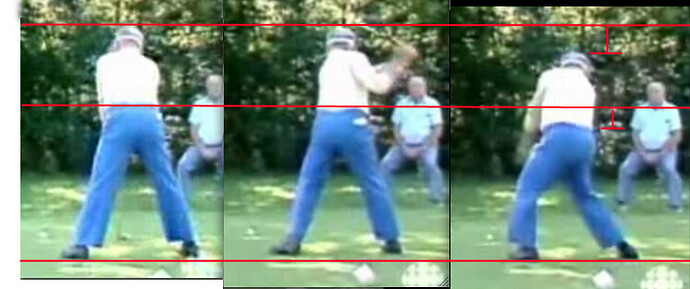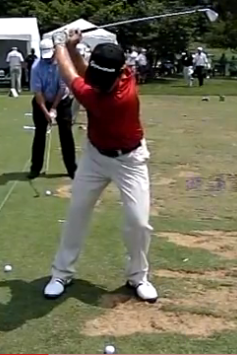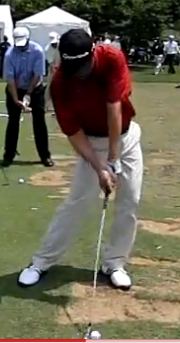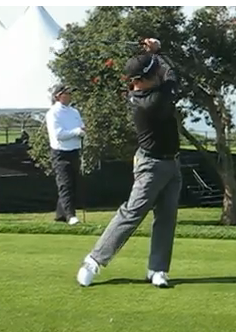I think a basic understanding is all that is really needed regarding spine tilt, torso tilt, waist bend, spine axis, shoulder rotation, lumbar flexing and so on. I don’t see getting lost in translation of small details as having much benefit. Counting the number or capillaries connecting to each vertebra and so forth. To some… all that is very interesting…but I don’t see it benefiting the actual striking of a golf ball all that much.
If there is one common element in good ball strikers, it is probably a big shoulder turn. Especially for longer hitters. I have never seen a long hitter who had a stunted shoulder rotation. Whether the torso, spine, some imaginary cylindrical pillar that runs through the body, or other description is more erect, bent forward, tilted to the right or left can be debated… there is little debate that it needs to be tilted toward the players right foot on the downswing. If you don’t do this, the arms simply don’t have a channel to move through on the downswing. If they don’t move through this channel along a visual 4:30 line, then they are going to work OTT. Simple really.
Are there power advantages to wobbling the spine from upright to tilted? I am sure some are convinced there are. Could there be an accuracy compensation in doing so? I believe so. Which is more repeatable? Likely depends upon the individual, and also how much they apply themselves to the mastery of the move they choose.
As far as transition, there are many ways to do it… some good… some bad. Trying to transition with a hand throw from the top is simply bad. Doing it with only the arms… almost as bad.
Transitioning with the torso only… better, but you can run out of rotational range of motion quickly leading to a pivot stall too early. You can slide the hips left quickly which some feel is the secret move. I actually like that move if done correctly by keeping pressure still firmly into the right foot or ankle. Most players working on that kind of Hogan hip slide lose pressure in the right foot leading to a train wreck later in the swing. If done correctly, I see it as the most advanced move you can make. Very few have applied it successfully. A straight forward flexing of the knees I think will do the job fine. The Snead squat type action is easy to do… familiar enough for most who have ever sat down in a chair, and still allows for enough rotation to be saved and delayed for post impact pivot work. A lot of teaching doesn’t embrace it because to do this, the head must drop at transition. Of course everyone knows we are supposed to have a stationary head, so this should be a real no no… but history shows us that nearly every great striker if not every single one, drops there head at transition. Certainly Trevino, Moe, Knudson, Hogan all did. I agree with Knudson that the head goes where it goes, and trying to keep it still is probably the #1 incorrect swing myth of all time. The legs provide the pressures into the ground, initiate transition, lower COG, flatten entry into impact. I see a lot of stiff legs these days, stick men I call them… and I see a lot of poor ball striking, even out on tour.




